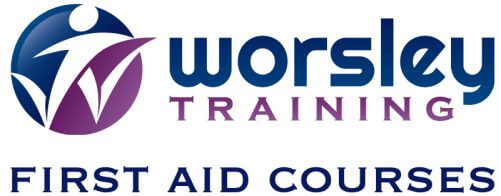CPR
An Article by Worsley Training – First Aid Training in and around Wiltshire

If someone is unresponsive and not breathing normally:
1. Send someone to call 999 and fetch a defibrillator if available
2. Give 30 chest compressions at a rate of 100-120 per minute
3. If you are willing and able, then give 2 rescue breaths after every 30 compressions
4. Continue until help arrives, the casualty starts breathing normally or you are too exhausted to continue.
For children and drowning casualties, give 5 initial rescue breaths before starting your chest compressions. Then continue with the normal cycle of 30:2.
This photo from one of our paediatric courses gives a perfect demonstration of the different techniques for CPR chest compressions on adults, children and babies. You are aiming to squash the centre of their chest to a third of its depth in order to beat their heart, so the force required obviously changes according to the size of the casualty. You should use 2 hands for an adult, 1 hand for a child and just 2 fingers for a baby.
An average sized adult doing CPR on an average sized adult will stop being fully effective after 2 minutes, as they will slow down a bit or stop pressing hard enough. This is because it is exhausting, so always interlock your elbows so that you use your bum and leg muscles instead of your smaller arm muscles. If there is someone else who can help, then keep swapping every 2 minutes.
Giving it a go on a CPR manikin will help these protocols sink in, as I can guarantee your mind will go blank if you found yourself in a real situation. Remember it’s better to have the skills and not need them than the alternative, but also anything that you do is better than nothing.
Book onto one of our courses today and start feeling confident about first aid. Book a course
